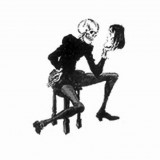The attempt of this book is to detect certain “molds” to occasional forms of theatre space and certain shapes or patterns in the dealings of both the dramaturgy and architecture always in relation to the social context of each era. These can be summarized in ten phases:
• The stage of the theatre of classical ancient Greece and the Hellenistic extensions. The processing of an architectural model designed to be delivered as a bequest under the name “Greek theatre”
• The phase of the Roman theatre, the Greco-Roman model and the appearance of the Amphitheatre
• The phase during the Middle Ages, the Christian cult with its own theatrical structure and the emergence of multi-level stage
• The Renaissance theatre in the courts of nobility, the scenography of perspective and horseshoe arrangement of viewers around the happenings
• The stage of the theatre of the Baroque era, the typology of the Italian scene, the extensive scenography with the curtains and the mechanisms
• The theatre of the 18th century, the Εnlightenment, which dealt primarily with the layout of the theatre buildings and the scene of the opera
• The transitional period of the Revolution theatre where the bourgeoisie is born and the display of a renewed audience much more numerous and socially complex
• The theatre of Romanticism where each artist could express his emotions and personal truth. Later the theatre of Naturalism born from the ideas of Emile Zola. The typology of the theatre of Wagner.
• The theatre of concern with the appearance of directing and the reviewing of theatrical concepts
• The theatres of the 20th century with the customizable, the customized and alternative theatres
